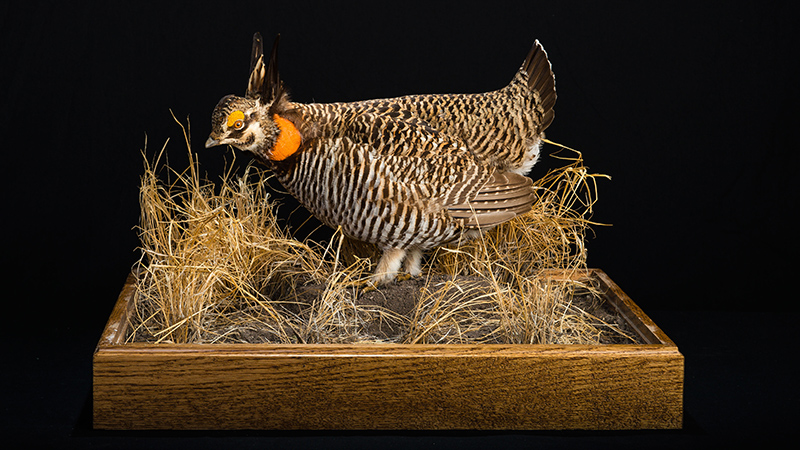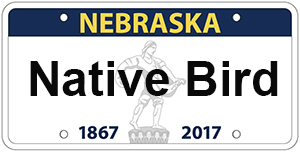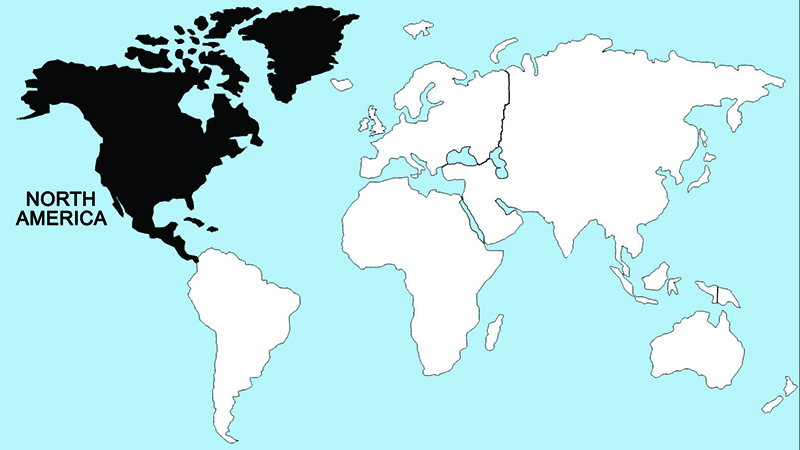Greater Prairie-Chicken

Greater and lesser prairie-chickens are now considered separate species, the greater occupying taller native prairies and tolerating the colder temperatures of the northern Great Plains, and the now increasingly rare lesser species found in shortgrass prairies and semi-desert grasslands from Texas and New Mexico to Kansas. Both species are found in mixedsex flocks during the fall and winter, but by spring the males return to their traditional display grounds, where they reestablish old territories or, in the case of young birds, try to acquire new ones. Like sage-grouse and sharp-tailed grouse, experienced, older male prairie-chickens tend to hold central territories, while the younger males establish peripheral ones. Territorial advertisement consists of the well-known "booming" display, which is called "gobbling" in the lesser prairie chicken. The male, erects the feathered pinnae above his head, drops his wings, stamps his feet, and calls, while inflating his bare yellow (in the greater) to reddish (in the lesser) skin areas on the sides of his neck. Besides the rather soft call, which is low pitched and dove-like in the greater, and more highpitched and melodic in the lesser, tail-clicking sounds are produced and the foot stamping is often audible. Males often perform short vertical flights, called "flutter-jumps," usually while uttering cackling calls.
Females build their nests at varying distances from the display grounds at which they were fertilized, and may actually nest nearer to some other display ground. In both species the eggs are laid at an approximately daily rate, and the normal clutch size of initial nesting attempts is from about 12–14 eggs. The incubation period is from 23–26 days. The broods usually remain with their mothers for 6–8 weeks, after which the families gradually disintegrate.
Regions Birds Are Found


Collection Location & Year
U.S. - Nebraska 2001
Taxonomy
| Order | Galliformes |
|---|---|
| Family | Phasianidae |
| Sub Family | Tetraoninae |
| Species | Tympanuchus |
| Genus | cupido |
Gender
Male
References
- Johnsgard, P. A. 1973. Grouse and Quails of North America. Lincoln, NE: Univ. of Nebraska Press.
- Johnsgard, P. A. 1983. The Grouse of the World. Lincoln, NE: Univ. of Nebraska Press.
- Johnsgard, P. A. 2002. Grassland Grouse and their Conservation. Washington, DC: Smithsonian Inst. Press.
- del Hoyo, J. A. Elliot, and J. Sargatal, eds. 1994. Handbook of Birds of the World. Vol. 2 (New World Vultures to Guineafowl). Barcelona, Spain: Lynx Editions.